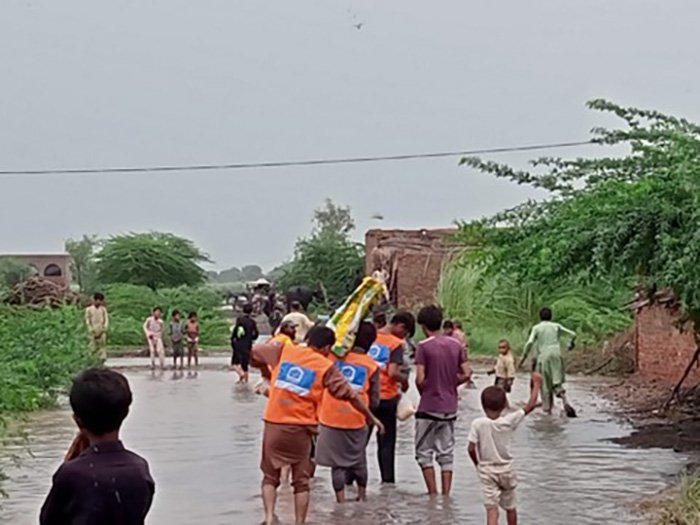Dr Ayesha Sheikh is a specialty doctor in Ageing and Health at Royal Surrey County hospital. Currently working as a stroke registrar. She is a BGS LTFT and BMA (SECRC) representative.
Scale of the disaster
Pakistan has been hit by catastrophic floods this summer. In July and August 2022, Pakistan had 391mm (15.4in) of rain, or nearly 190% more than the 30-year average. Sindh province, in the country’s south, has seen 466% more rain than average1.
Despite a low carbon footprint, Pakistan is now living through a climate change-induced catastrophe. In fact, for the past 20 years, Pakistan has consistently ranked among the top 10 most vulnerable countries on the Climate Risk Index.
One third of the country is submerged, with the worst hit areas being the poorest regions of the provinces of Sindh and Balochistan.
The scale of devastation is massive - more than 1500 people have lost their lives and close to 8 million have been displaced, with nearly 600,000 living in relief camps and 33 million affected1. Children, pregnant women, and older people are particularly at risk. There are 16 million older people in Pakistan and around 2.3 million are affected by the floods2.
The government of Pakistan has estimated losses worth US$40 billion from the flooding, and already limited resources are stretched to the limit3. Recovery and rehabilitation have been slow. Many houses are still submerged and cut off from the mainland. Road and rail links have been disrupted. Most of the submerged areas are agricultural lands and small villages. A significant number of crops have been completely destroyed.
The impacts of this disaster will be felt in the region for years to come.
Risks to the those affected
Standing water areas have become a hub for mosquito-borne diseases such as malaria and dengue. Since 1 July, a total of 2,300,000 patients have been treated for malaria in field and mobile hospitals2. Typhoid is another health issue. Venomous snake bites have also been reported.
Winter is approaching fast, and chest infections are on the rise leading to fatal pneumonia.
There are risks of drowning, electrocution and injuries from the collapse of mud house walls and roofs in villages.
Insufficient sanitation is also a concern, and various infections have spread, including skin and eye infections.
Many no longer have access to their regular medications for their health problems.
Older people with limited reserve are most at risk. Older people have already been struggling with their mobility and other chronic health problems. They are now left without their mobility aids, rendering them even more vulnerable.
Families have lost loved ones and homes, and are going through immense grief while also being without sheltered.
Relief efforts
UN secretary General Antonio Guterres has already appealed for massive international support to tackle this.
Many national and international associations and charity organisations are on the ground. They have set up mobile health units to provide health care on an emergency basis.
Shelter
Poorer villagers live in mud homes that have been swept away in the floods, leaving them living in the open.
Older people are particularly vulnerable and in need of safe and secure shelter from the elements such as secure tents, housing and mosquito nets.
Medication
Commuting to cities to seek medical help is difficult. Many local hospitals and village dispensaries are flooded. Onsite medical camps are the need of the hour. Basic medications like paracetamol, antibiotics (Amoxicillin etc.) are required urgently.
Food and water
With many at risk of starvation, cooked and uncooked food is welcome. A flour bag can provide food for a family of four.
Clothing
Warm clothing is an essential requirement given the affected areas can experience cold weather.
Mobility
Mobility aids e.g sticks/zimmer frames can help elderly affectees
Emotional/Mental Health support
Onsite medical camps are needed, with mental rehabilitation volunteers/experts who can listen to the affectees and provide emotional and spiritual support. Making sure families are together is also critically important.
Useful Links
- https://donate.unrefugees.org.uk/general/~my-donation
- https://alkhidmat.org/appeals/emergency-flood-appeal.html
- https://www.dec.org.uk/
References
-
https://www.theguardian.com/world/2022/sep/10/un-secretary-general-anto…
-
https://www.helpage.org/what-we-do/supporting-older-people-in-pakistan-…
